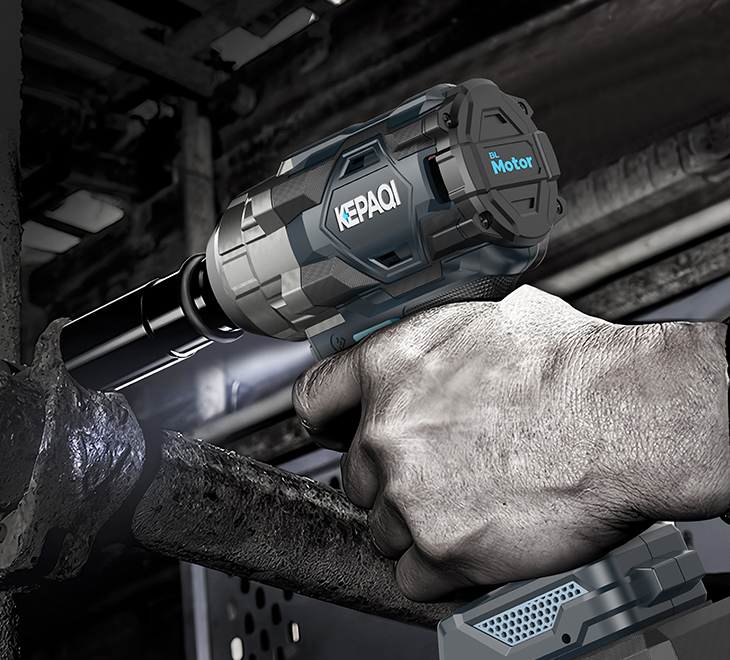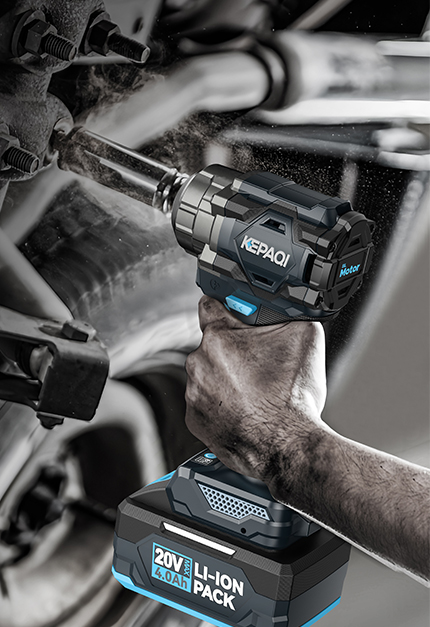2025-10-15
Cordless impact wrenches have revolutionized the way professionals and DIY enthusiasts tackle heavy-duty fastening tasks. Whether you’re working in an auto repair shop, assembling machinery, or performing home maintenance, these powerful tools provide the muscle you need—without the restriction of cords or air hoses.
Unlike traditional pneumatic models, cordless impact wrenches offer unmatched portability and convenience, powered by advanced lithium-ion batteries that deliver consistent torque and long runtime. With modern innovations like brushless motors, variable speed control, and compact ergonomic designs, they’re now more efficient and user-friendly than ever.
Choosing the right cordless impact wrench, however, can be challenging. Different models vary widely in torque output, battery performance, and anvil size, and selecting the wrong one can affect both your efficiency and results. This guide will help you navigate the top options, key features, and essential buying factors—so you can find the perfect balance of power, performance, and portability for your specific needs.

A cordless impact wrench is a handheld power tool that delivers high-torque output to tighten or loosen nuts, bolts, and fasteners, without being tethered to a power cord or compressed-air line. It uses a battery pack (typically lithium-ion) as its energy source. The tool’s mechanism rapidly delivers repeated rotational impacts (or “hammering torque”) to overcome resistance and break loose stuck fasteners or apply high torque quickly.
Key characteristics include:
This combination enables heavy-duty fastening tasks in environments where mobility and flexibility are crucial.
| Feature | Cordless Impact Wrench | Cordless Impact Driver |
|---|---|---|
| Primary use | High-torque tasks: lug nuts, bolts, heavy machinery | Driving screws, bolts, lag bolts, lighter fastening |
| Torque output | Much higher torque (often several hundred to over a thousand ft-lb) | Moderate torque (tens to low hundreds of ft-lb) |
| Anvil / bit interface | Usually square drive (½", ⅜", or ¼") for sockets | Hex chuck (typically ¼" hex) for bits and driver sockets |
| Size and weight | Bulkier and heavier due to impact mechanism and battery | More compact and lighter, optimized for accessibility and maneuvering |
| Speed & impact rate | Lower RPM but high impact frequency, optimized for torque | Higher RPM with impact assist, optimized for driving fasteners quickly |
| Typical applications | Automotive wheels, structural bolts, heavy machinery | Decking, framing, cabinetry, furniture, lighter mechanical work |
Definition & Importance: Torque is the rotational force the impact wrench can apply, typically expressed in foot-pounds (ft-lb) or newton-meters (Nm). It determines how effective the tool is at loosening stubborn bolts or tightening fasteners firmly.
Typical Ranges & Applications:
How to Interpret Specs: Be aware that manufacturers often quote peak or breakaway torque (the maximum instantaneous value). Real-world continuous torque under load may be lower.
| Battery Voltage | Typical Torque Range (ft-lb) | Runtime with 4 Ah Pack | Common Use |
|---|---|---|---|
| 12 V | 100–200 | 25–40 min | Light assembly tasks |
| 18–20 V | 200–700 | 40–70 min | Most automotive and maintenance work |
| 24–36 V | 700–1,200+ | 60–100 min | Heavy-duty and industrial applications |
| Aspect | Brushed Motor | Brushless Motor |
|---|---|---|
| Efficiency | Moderate | High (less heat loss) |
| Maintenance | Brushes wear out | No brushes, low maintenance |
| Torque Output | Standard | 20–30% higher |
| Cost | Lower | Higher |
| Longevity | Shorter lifespan | Longer lifespan |
| Category | Weight Range | Common Use |
|---|---|---|
| Compact | 3–4 lb | Light mechanical and home projects |
| Midrange | 4–6 lb | General automotive tasks |
| Heavy-duty | 6–10 lb+ | Professional or industrial use |
| Anvil Size | Typical Application |
|---|---|
| ¼″ | Light mechanical or assembly work |
| ⅜″ | Moderate torque tasks in confined areas |
| ½″ | Standard for automotive and heavy repair |
| ¾″ | Heavy equipment and industrial work |
| 1″ | Structural and extreme-duty applications |
Built-in LED lighting helps illuminate dark work areas and improves accuracy during fastening tasks.

| Application Type | Recommended Torque Range (ft-lb) | Preferred Anvil Size | Notes |
|---|---|---|---|
| Light assembly, appliance repair | 100–200 | ¼″ or ⅜″ | Compact and lightweight models are sufficient. |
| General automotive, wheel lug nuts | 200–400 | ½″ | Best balance of power and portability. |
| Heavy automotive, truck or tractor repair | 400–800 | ½″ or ¾″ | More torque required for rusted or large fasteners. |
| Industrial or structural steel | 800–1,200+ | ¾″ or 1″ | Ideal for demanding torque loads. |
| Torque Level (ft-lb) | Fastener Size Range (approx.) | Typical Use |
|---|---|---|
| 100–250 | M6–M10 bolts | Light mechanical or home use |
| 250–500 | M10–M16 bolts | General automotive |
| 500–1,000 | M16–M20 bolts | Truck, equipment maintenance |
| 1,000+ | M20+ bolts | Heavy-duty or industrial applications |
| Battery Voltage | Typical Torque Range (ft-lb) | Runtime with 4 Ah Pack | Common Use |
|---|---|---|---|
| 12 V | 100–200 | 25–40 min | Light-duty tasks |
| 18–20 V | 200–700 | 40–70 min | Automotive and general work |
| 24–36 V | 700–1,200+ | 60–100 min | Heavy or industrial work |
| Price Range (USD) | Expected Features | User Type |
|---|---|---|
| Under $150 | Brushed motor, 12–18 V, ≤300 ft-lb | Light DIY |
| $150–300 | Brushless, 18–20 V, 300–700 ft-lb | Regular users |
| $300–600+ | Advanced electronics, >700 ft-lb | Professional use |
Always wear impact-rated safety glasses or goggles to protect your eyes from debris or fragments expelled under torque.
Use properly sized, impact-rated sockets that fit tightly on fasteners. Loose or damaged sockets can slip, crack, or round bolt heads, creating hazards.
Do not rely solely on the impact wrench for final tightening. Always verify torque with a calibrated wrench to prevent thread damage or component failure.
Check batteries, casing, anvil, and trigger condition before each use. Clean debris, inspect for cracks, and ensure all moving parts function smoothly. Perform a deeper inspection monthly if used frequently.